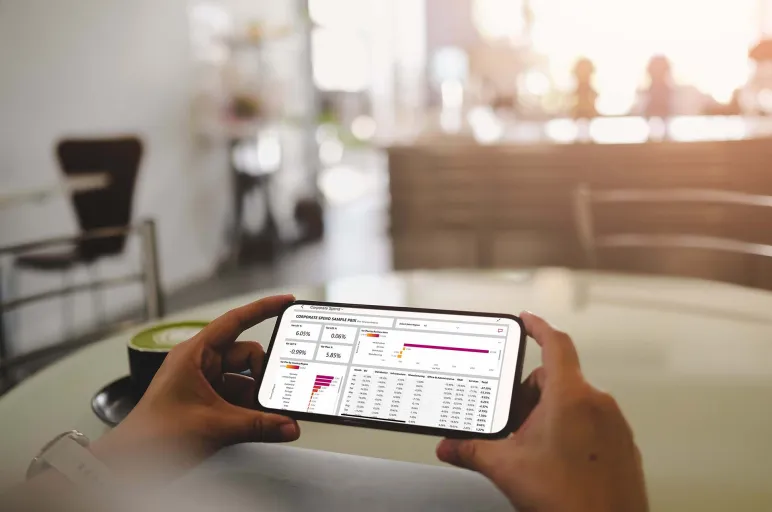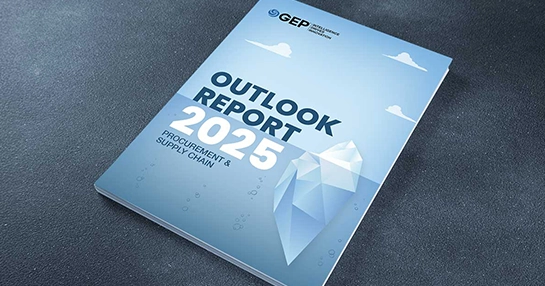
Understanding the Different Types of Spend Analysis (and How They Unlock Procurement Intelligence)
- Effective spend analysis progresses from descriptive to prescriptive, transforming raw data into strategic action.
- Strategic spend analysis aligns procurement with organizational goals beyond mere cost savings.
- AI enhances spend analysis capabilities but remains most effective when combined with human expertise.
May 05, 2025 | Procurement Strategy 4 minutes read
Organizations constantly look for ways to optimize costs while maximizing value. And one of the most powerful tools in this pursuit is spend analysis — a systematic process that transforms raw procurement data into actionable insights. As supply chains continue to become increasingly complex due to geopolitical conflicts and tariff wars, understanding the various types of spend analysis becomes critical for procurement professionals aiming to drive strategic value beyond mere cost savings.
Ready for Growth? GEP Has the Answers
Transform your business with our AI-powered procurement and supply chain software and services
What is Spend Analysis?
Spend analysis involves collecting, cleansing, classifying, and analyzing expenditure data to reduce procurement costs, improve efficiency, and monitor compliance. It provides visibility into what an organization buys, from whom, at what price, and under what terms. This intelligence enables data-driven decisions that can significantly impact the bottom line.
Also Read: Spend Analysis Guide
Types of Spend Analysis
From basic historical reviews to sophisticated predictive modeling, various analytical methods form a comprehensive toolkit that enables organizations to extract maximum value from their procurement data while addressing challenges at every level of complexity.
Descriptive Spend Analysis
The foundation of all spend analysis efforts begins with descriptive analytics. This approach answers the fundamental question: "What happened?" By examining historical spending patterns, procurement teams can identify:
- Total spend by category, supplier, department, and region
- Spending trends over time
- Compliance with existing contracts
- Maverick spend occurring outside approved channels
- Supplier concentration or even diversity metrics
Descriptive analysis provides the necessary visibility to understand current spending behaviors across the organization. For instance, despite having negotiated contracts with three primary supply vendors, individual departments are purchasing similar items from many other non-contracted suppliers at premium prices. This insight immediately highlights an opportunity for consolidation and savings.
Diagnostic Spend Analysis
Moving beyond what happened, diagnostic spend analysis delves into why it happened. This type of analysis involves deeper investigation into spending anomalies, cost drivers, and performance variances. Procurement professionals use diagnostic techniques to:
- Understand root causes of spending increases or decreases
- Identify factors driving price variations across locations
- Analyze supplier performance against contractual commitments
- Determine causes of non-compliance with procurement policies
- Evaluate cost structures within specific categories
For example, upon observing increasing costs for a direct material, diagnostic analysis might reveal that the price increase stems not just from market conditions but from a shift to rush orders due to poor inventory management — an internal process issue that can be fixed.
Predictive Spend Analysis
Forward-looking organizations leverage predictive spend analysis to answer: "What will happen?" Using statistical models, machine learning, and historical data patterns, this approach forecasts future spending scenarios, helping procurement teams to:
- Anticipate future price trends and market conditions
- Forecast demand for specific categories and items
- Predict potential supply disruptions
- Identify categories at risk for cost increases
- Project the financial impact of changing suppliers or contracts
A retail chain might employ predictive spend analysis to forecast seasonal packaging needs based on historical purchasing patterns combined with projected sales growth, enabling them to negotiate volume-based discounts well in advance of peak periods.
Prescriptive Spend Analysis
The most advanced form of spend analysis is prescriptive, which recommends specific actions to optimize outcomes. This approach combines insights from descriptive, diagnostic, and predictive analysis to suggest:
- Optimal sourcing strategies for different categories
- Timing for contract negotiations based on market conditions
- Specific suppliers to consolidate or diversify
- Areas where standardization could drive savings
- Strategic make-vs-buy decisions
A technology company utilizing prescriptive analysis might receive recommendations to consolidate software license purchases across divisions, standardize on fewer configurations, and time renewals to coincide with the vendor's fiscal year-end to maximize discounts.
Strategic Spend Analysis
While not always categorized separately, strategic spend analysis deserves special mention. This approach aligns procurement activities with broader organizational goals by examining:
- Total cost of ownership beyond purchase price
- Supplier relationship value beyond transactional costs
- Innovation opportunities through supplier collaboration
- Risk exposure across the supply base
- Sustainability and social responsibility impacts
For instance, an automotive manufacturer might perform strategic spend analysis to evaluate moving from numerous regional steel suppliers to a single global supplier. Beyond comparing direct costs, they would assess impacts on supply chain resilience, carbon footprint, innovation capability, and alignment with corporate sustainability goals.
Comparative Spend Analysis
Organizations increasingly benefit from comparative or benchmark spend analysis, which contextualizes internal spending against external reference points:
- Industry spending benchmarks and best practices
- Peer organization performance metrics
- Market pricing indexes and trends
- Cross-division or cross-regional internal benchmarks
- Historical performance versus current state
A professional services firm might compare its travel expenditures against industry benchmarks to discover that while their air travel costs are competitive, their hotel spending exceeds peer organizations by a considerable margin, pointing to a specific opportunity for negotiation.
How AI is Shaping Advanced Spend Analysis
Artificial intelligence is transforming spend analysis from a retrospective accounting exercise into a dynamic, forward-looking strategic tool. Machine learning algorithms now automatically classify thousands of transactions with unprecedented accuracy, identifying patterns invisible to human analysts. Natural language processing extracts valuable information from unstructured contract documents, while advanced analytics engines generate insights and recommendations without human intervention.
However, procurement leaders should maintain perspective when implementing AI-powered spend analysis. The most effective approach combines AI's processing power with procurement professionals' experience and business acumen.
Tail Spend Can Account for Up to 80% of Total Transaction Volume, If Left Untamed
Get this GEP-sponsored Everest Group research for insights to take control of your tail spend
The Future of Spend Analysis
As organizations continue to refine their procurement practices, spend analysis will evolve beyond cost management into a strategic driver of business value. Future-focused companies are already developing integrated approaches that connect spending data with broader business outcomes, supplier innovation capabilities, and sustainability metrics.
The organizations that gain the most competitive advantage won't be those with merely the most data or the most sophisticated analytics tools, but those that cultivate the organizational capability to translate spending insights into strategic action.



